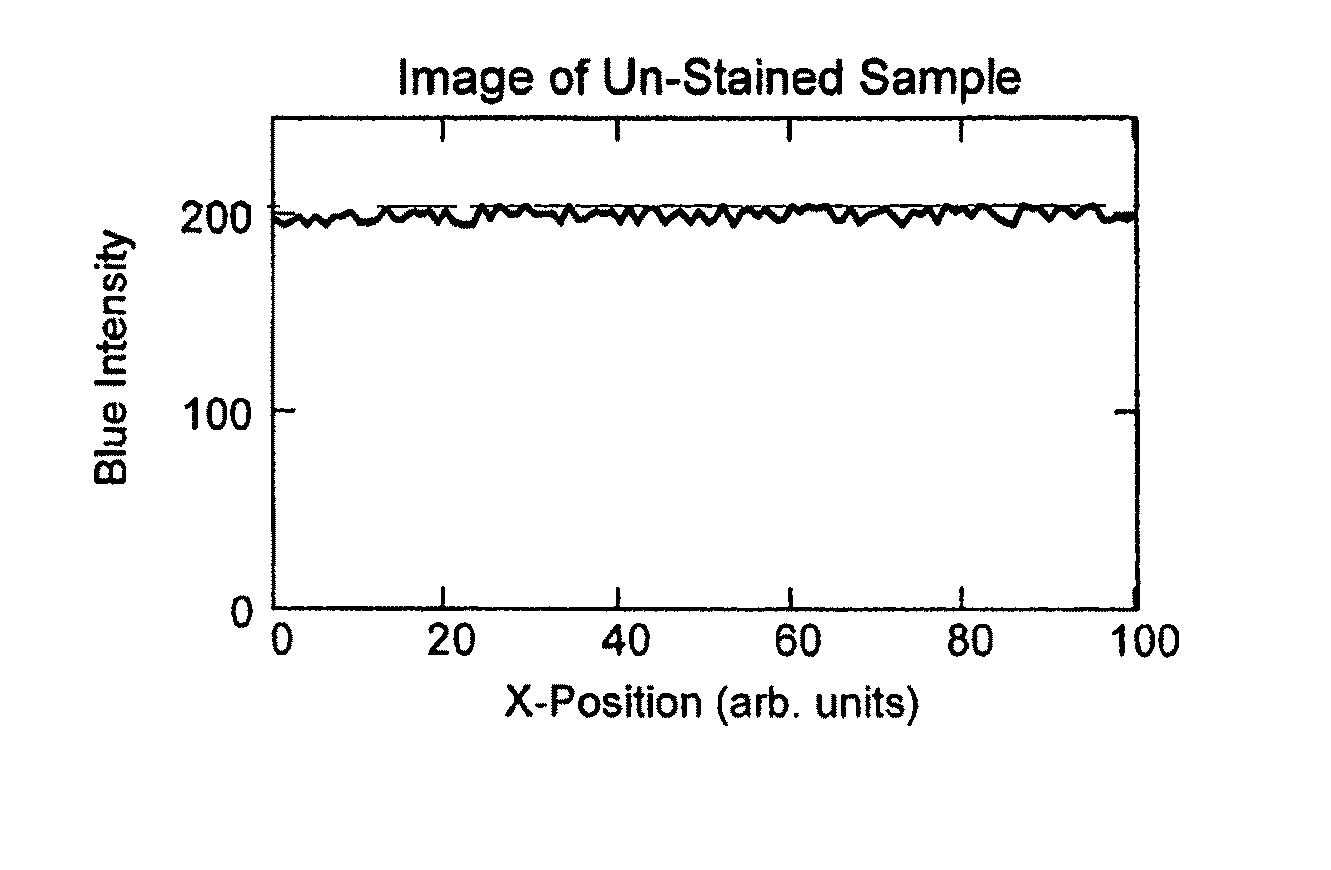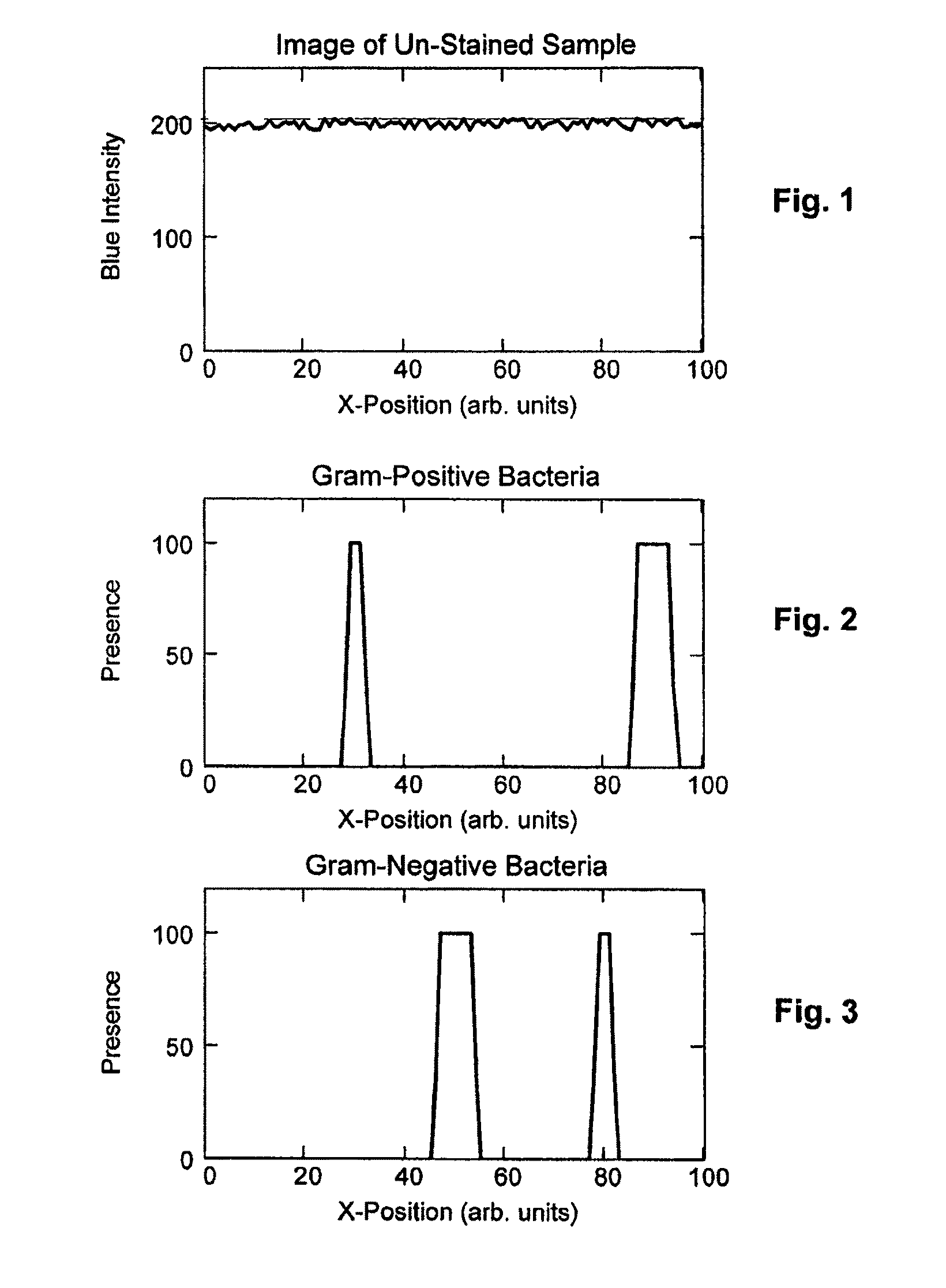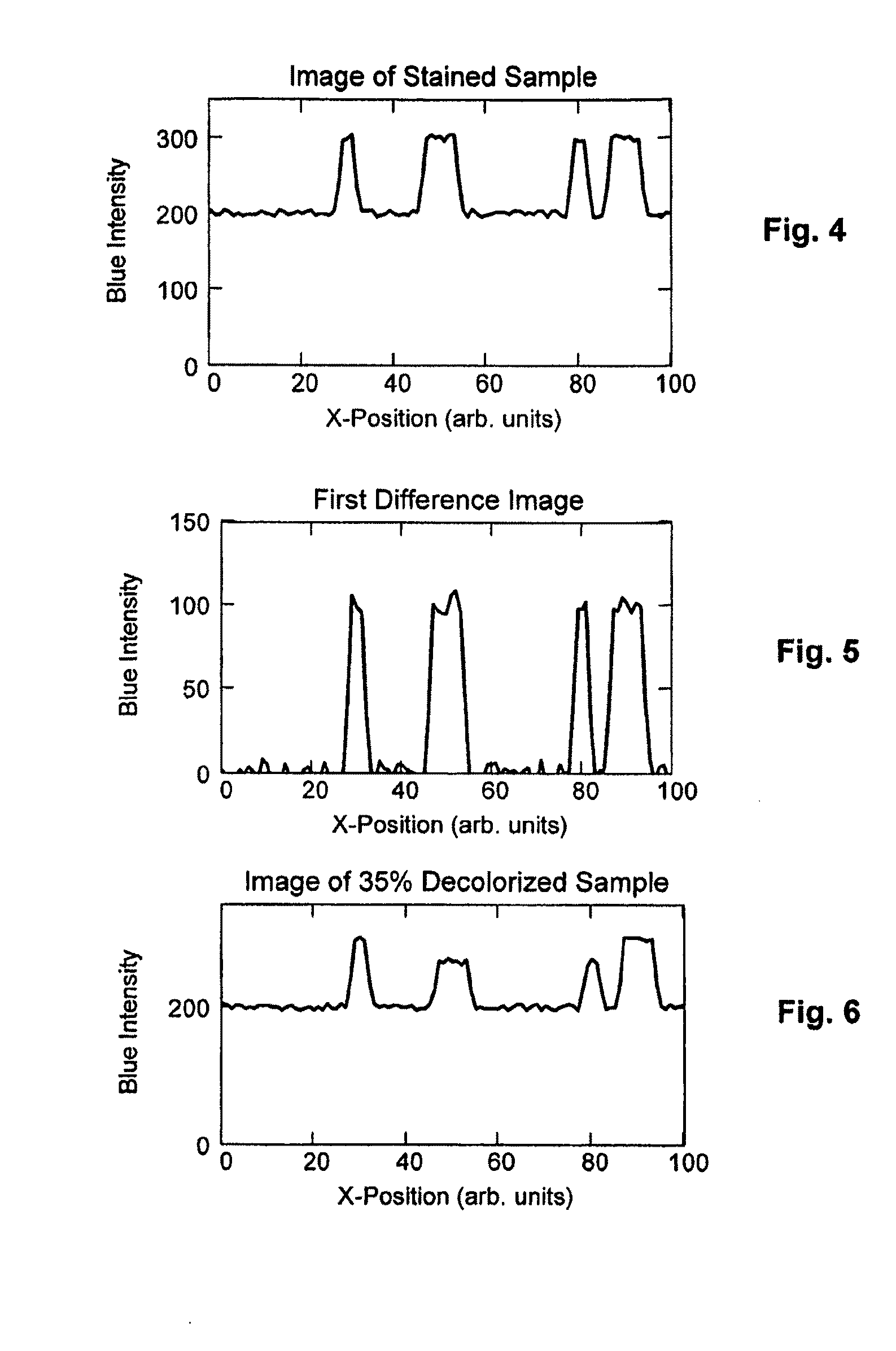Method and apparatus for automated staining of biological materials
a biological material and staining technology, applied in the field of biological material staining methods and apparatuses, can solve the problems of labor-intensive manual gram staining, inability to achieve the optimal staining characteristics of the sample set, and requires skilled personnel
- Summary
- Abstract
- Description
- Claims
- Application Information
AI Technical Summary
Benefits of technology
Problems solved by technology
Method used
Image
Examples
Embodiment Construction
[0061]The present inventions now will be described more fully hereinafter with reference to the accompanying drawings, in which some, but not all embodiments of the invention are shown. Indeed, these inventions may be embodied in many different forms and should not be construed as limited to the embodiments set forth herein; rather, these embodiments are provided so that this disclosure will satisfy applicable legal requirements. Like numbers refer to like elements throughout.
[0062]While the various method and system embodiments disclosed herein are described in the context of a Gram staining procedure, it should be understood that the various method and system embodiments described herein may also be applied to many other staining procedures that may cause optical and / or colorimetric changes in a sample. Furthermore, it should be emphasized that the exemplary images shown in FIGS. 1-29 represent only one line of a two-dimensional image. In reducing the various method and system emb...
PUM
 Login to View More
Login to View More Abstract
Description
Claims
Application Information
 Login to View More
Login to View More - R&D
- Intellectual Property
- Life Sciences
- Materials
- Tech Scout
- Unparalleled Data Quality
- Higher Quality Content
- 60% Fewer Hallucinations
Browse by: Latest US Patents, China's latest patents, Technical Efficacy Thesaurus, Application Domain, Technology Topic, Popular Technical Reports.
© 2025 PatSnap. All rights reserved.Legal|Privacy policy|Modern Slavery Act Transparency Statement|Sitemap|About US| Contact US: help@patsnap.com



